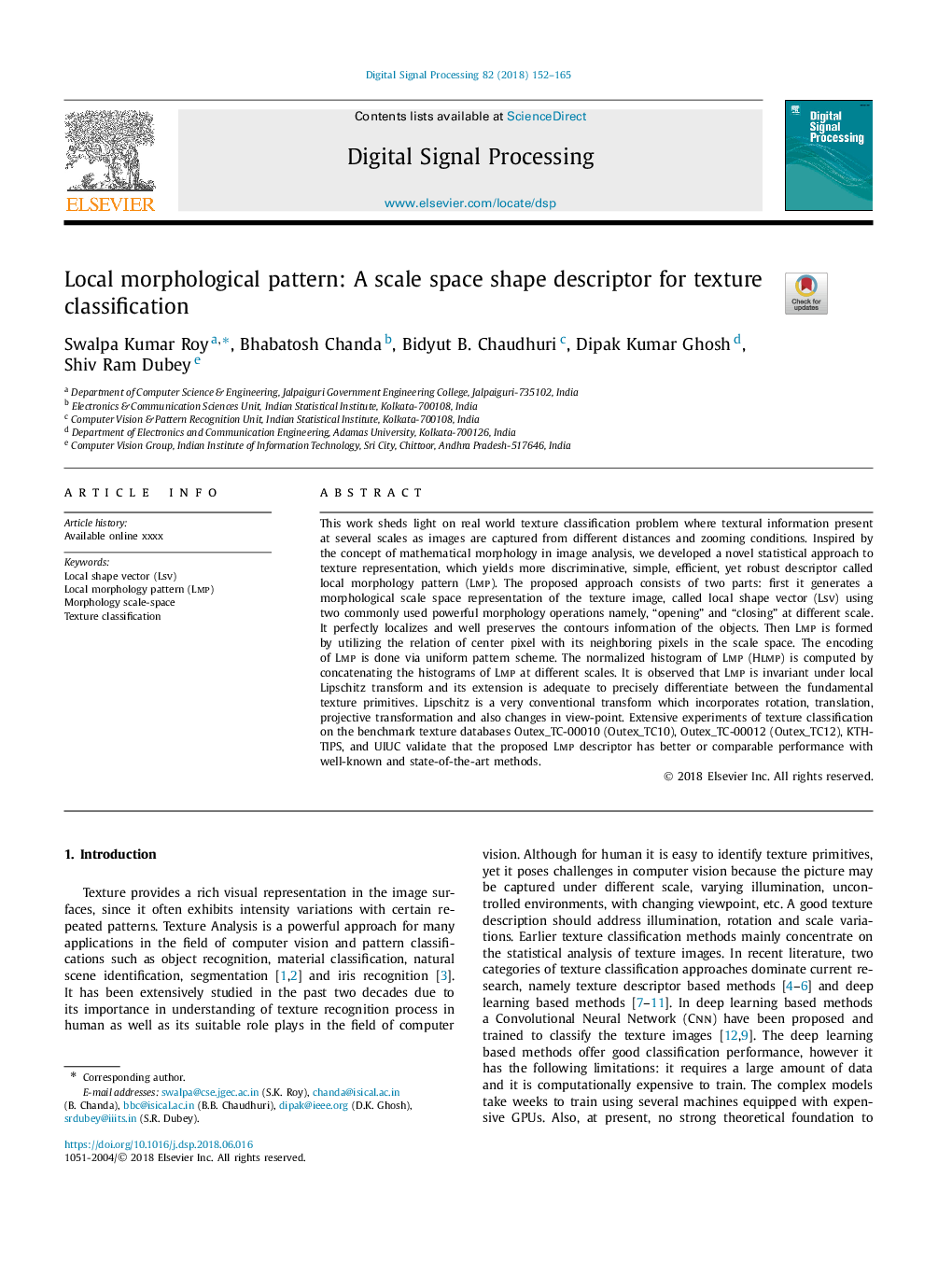| Article ID | Journal | Published Year | Pages | File Type |
|---|---|---|---|---|
| 6951601 | Digital Signal Processing | 2018 | 14 Pages |
Abstract
This work sheds light on real world texture classification problem where textural information present at several scales as images are captured from different distances and zooming conditions. Inspired by the concept of mathematical morphology in image analysis, we developed a novel statistical approach to texture representation, which yields more discriminative, simple, efficient, yet robust descriptor called local morphology pattern (Lmp). The proposed approach consists of two parts: first it generates a morphological scale space representation of the texture image, called local shape vector (Lsv) using two commonly used powerful morphology operations namely, “opening” and “closing” at different scale. It perfectly localizes and well preserves the contours information of the objects. Then Lmp is formed by utilizing the relation of center pixel with its neighboring pixels in the scale space. The encoding of Lmp is done via uniform pattern scheme. The normalized histogram of Lmp (Hlmp) is computed by concatenating the histograms of Lmp at different scales. It is observed that Lmp is invariant under local Lipschitz transform and its extension is adequate to precisely differentiate between the fundamental texture primitives. Lipschitz is a very conventional transform which incorporates rotation, translation, projective transformation and also changes in view-point. Extensive experiments of texture classification on the benchmark texture databases Outex_TC-00010 (Outex_TC10), Outex_TC-00012 (Outex_TC12), KTH-TIPS, and UIUC validate that the proposed Lmp descriptor has better or comparable performance with well-known and state-of-the-art methods.
Keywords
Related Topics
Physical Sciences and Engineering
Computer Science
Signal Processing
Authors
Swalpa Kumar Roy, Bhabatosh Chanda, Bidyut B. Chaudhuri, Dipak Kumar Ghosh, Shiv Ram Dubey,
